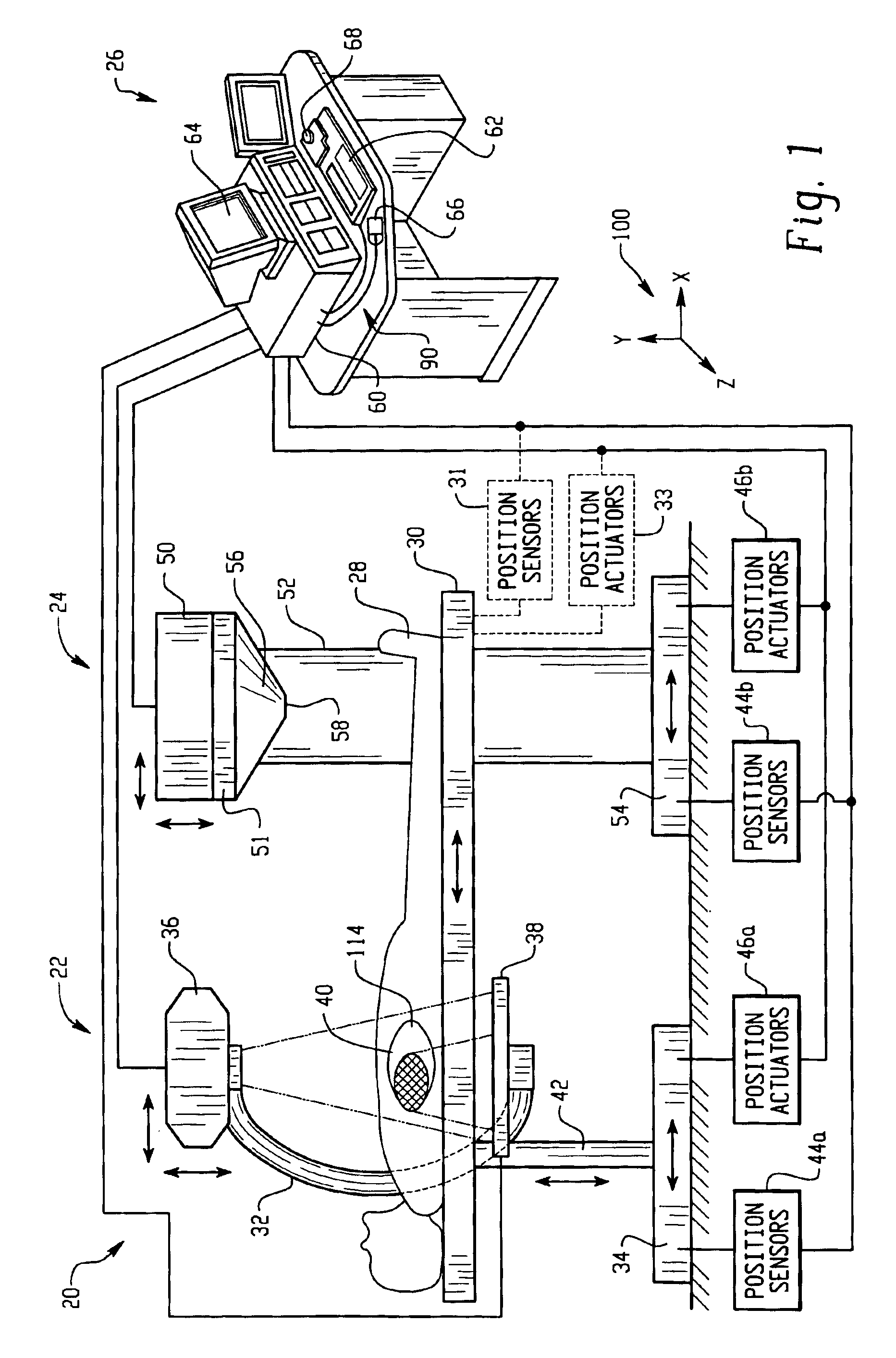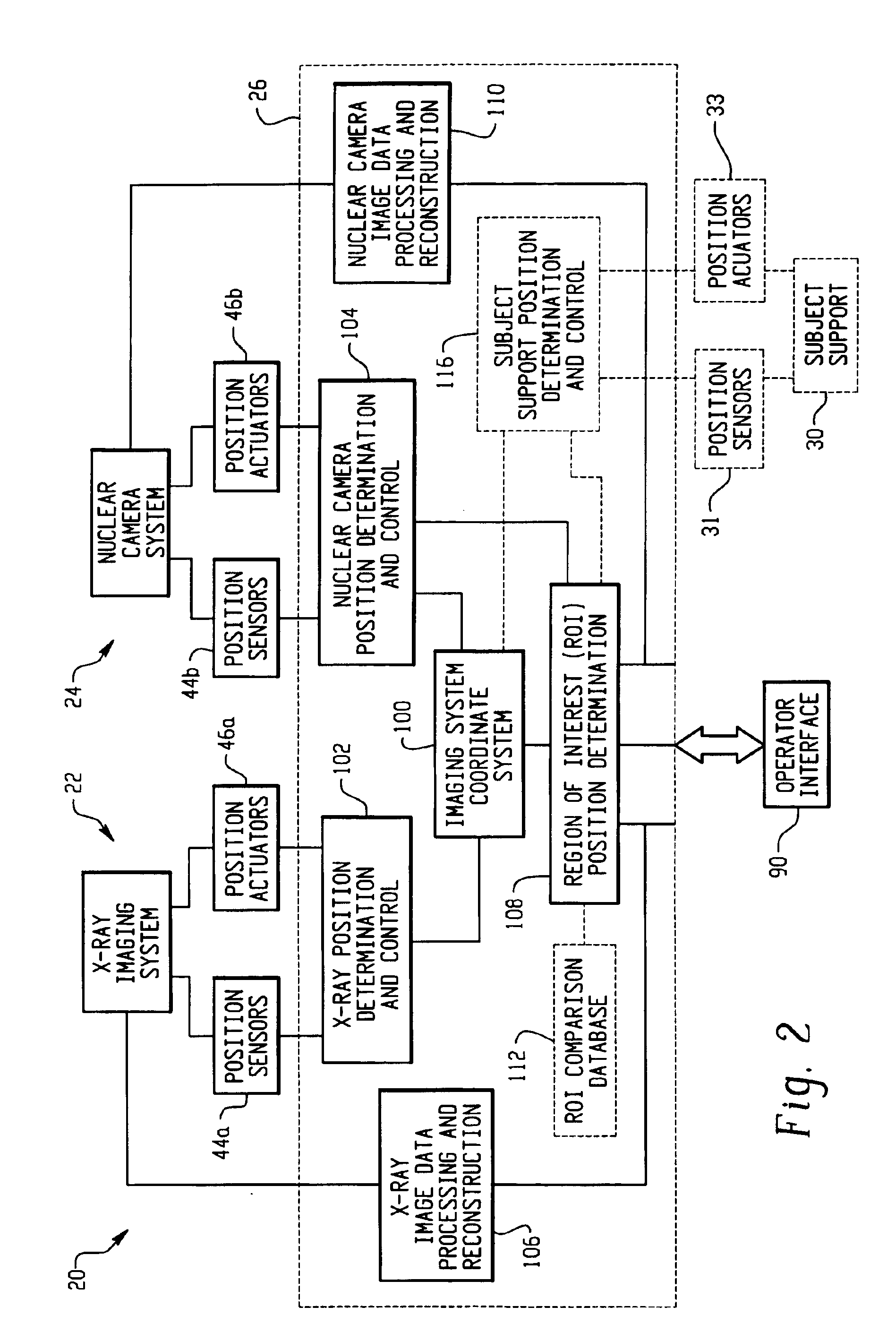Non-invasive plaque detection using combined nuclear medicine and x-ray system
- Summary
- Abstract
- Description
- Claims
- Application Information
AI Technical Summary
Benefits of technology
Problems solved by technology
Method used
Image
Examples
Embodiment Construction
[0024]With reference to FIG. 1, a diagnostic imaging system 20 includes an X-ray sub-system 22, a nuclear camera sub-system 24 and a control console 26. An imaging subject 28 is supported on a subject support 30 in an examination region of the diagnostic imaging system 20.
[0025]The X-ray diagnostic imaging sub-system 22, such as a fluoroscopic and / or radiographic imaging system, includes a support member 32 that is attached to a moveable floor mounted base structure 34. The support member 32 may be coupled to the base structure 34 with a telescopic support column member 42. In the embodiment being described, the support member 32 includes a C-arm.
[0026]An x-ray source or tube 36 is secured to a first free end of the support member 32, and an opposing x-ray detector 38 is secured to a second free end of the support member 32. A fluoroscopic / radiographic examination region is defined between the x-ray source 36 and x-ray detector 38. The x-ray source 36 and x-ray detector 38 can be po...
PUM
 Login to View More
Login to View More Abstract
Description
Claims
Application Information
 Login to View More
Login to View More - R&D
- Intellectual Property
- Life Sciences
- Materials
- Tech Scout
- Unparalleled Data Quality
- Higher Quality Content
- 60% Fewer Hallucinations
Browse by: Latest US Patents, China's latest patents, Technical Efficacy Thesaurus, Application Domain, Technology Topic, Popular Technical Reports.
© 2025 PatSnap. All rights reserved.Legal|Privacy policy|Modern Slavery Act Transparency Statement|Sitemap|About US| Contact US: help@patsnap.com



